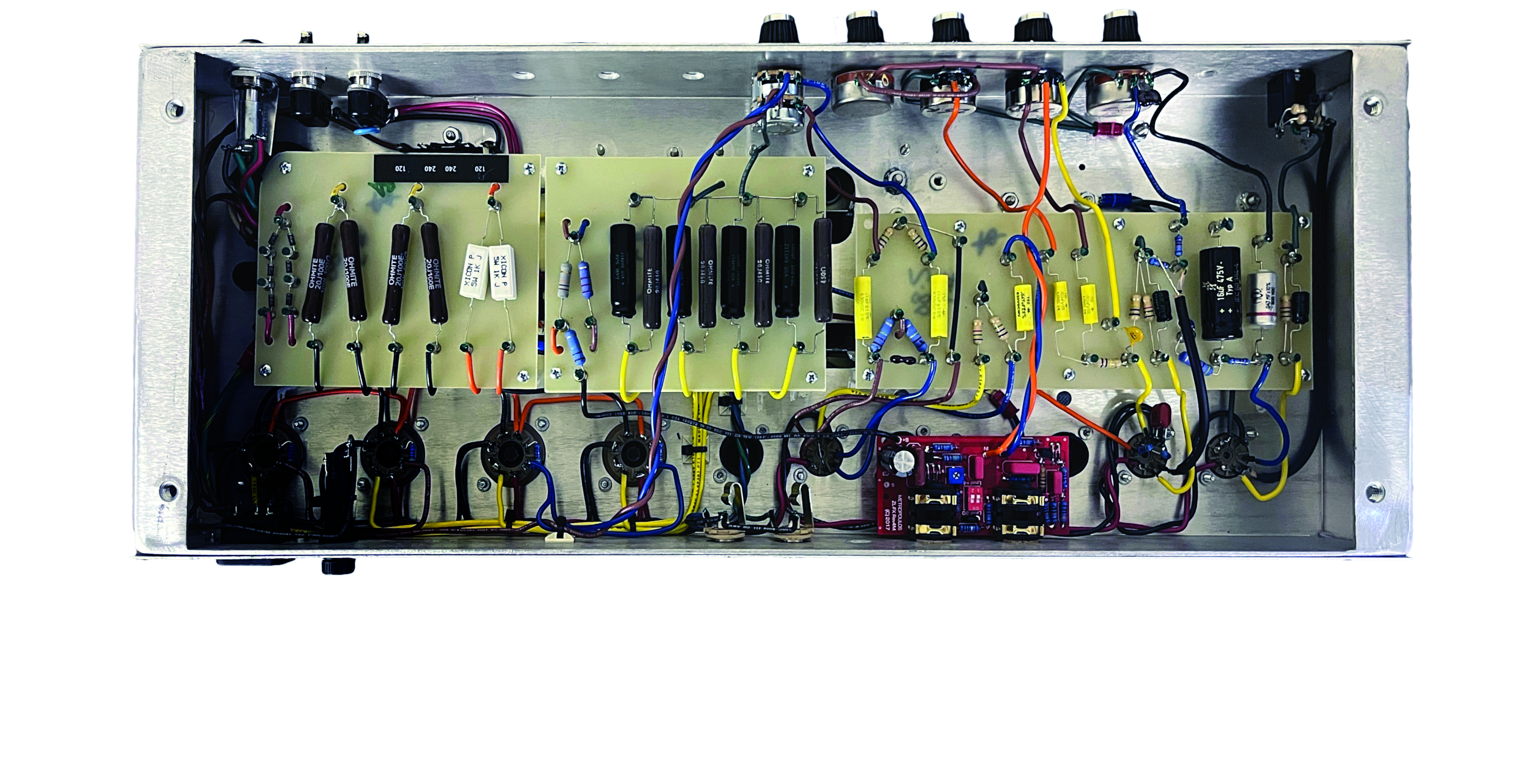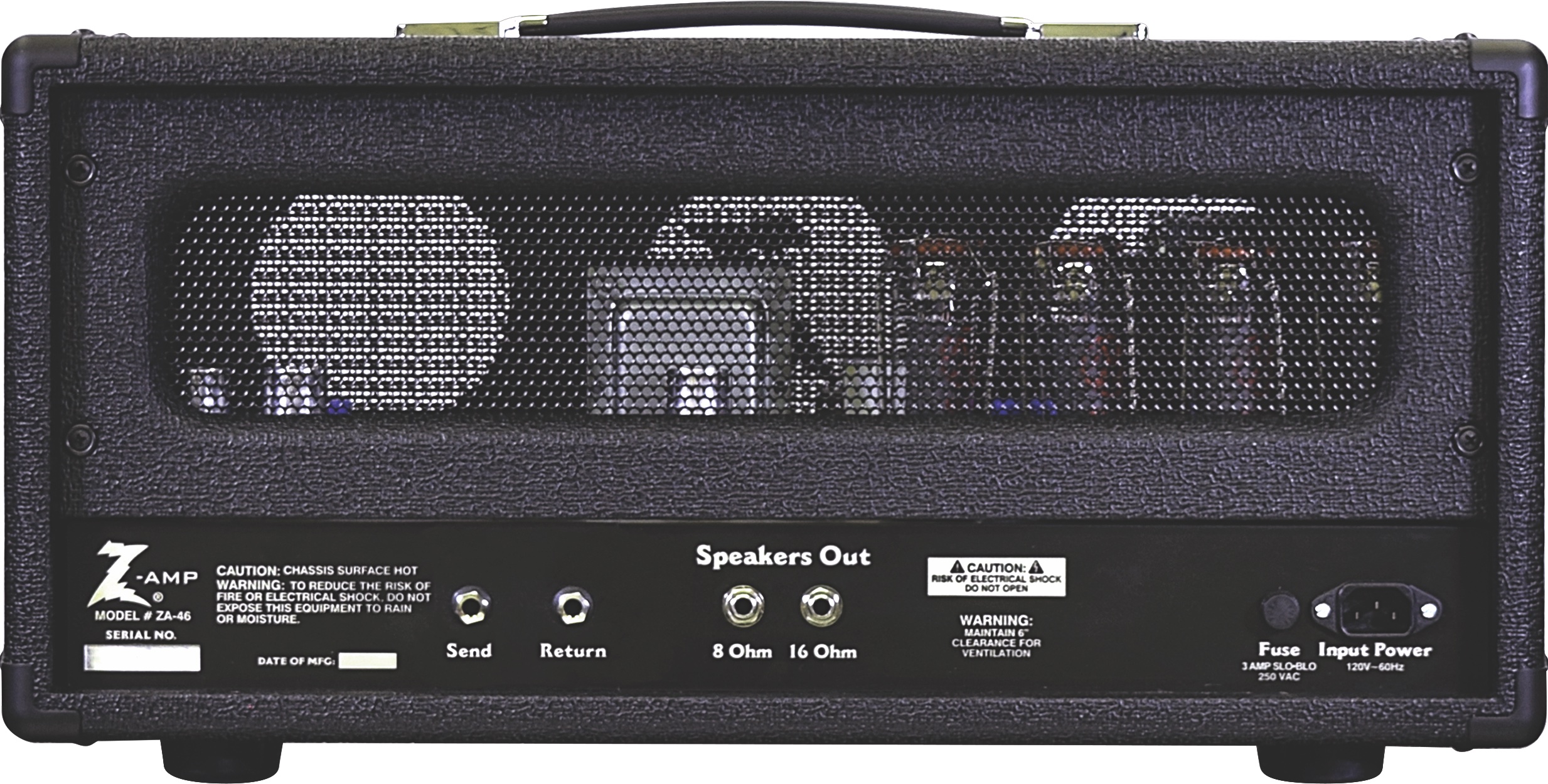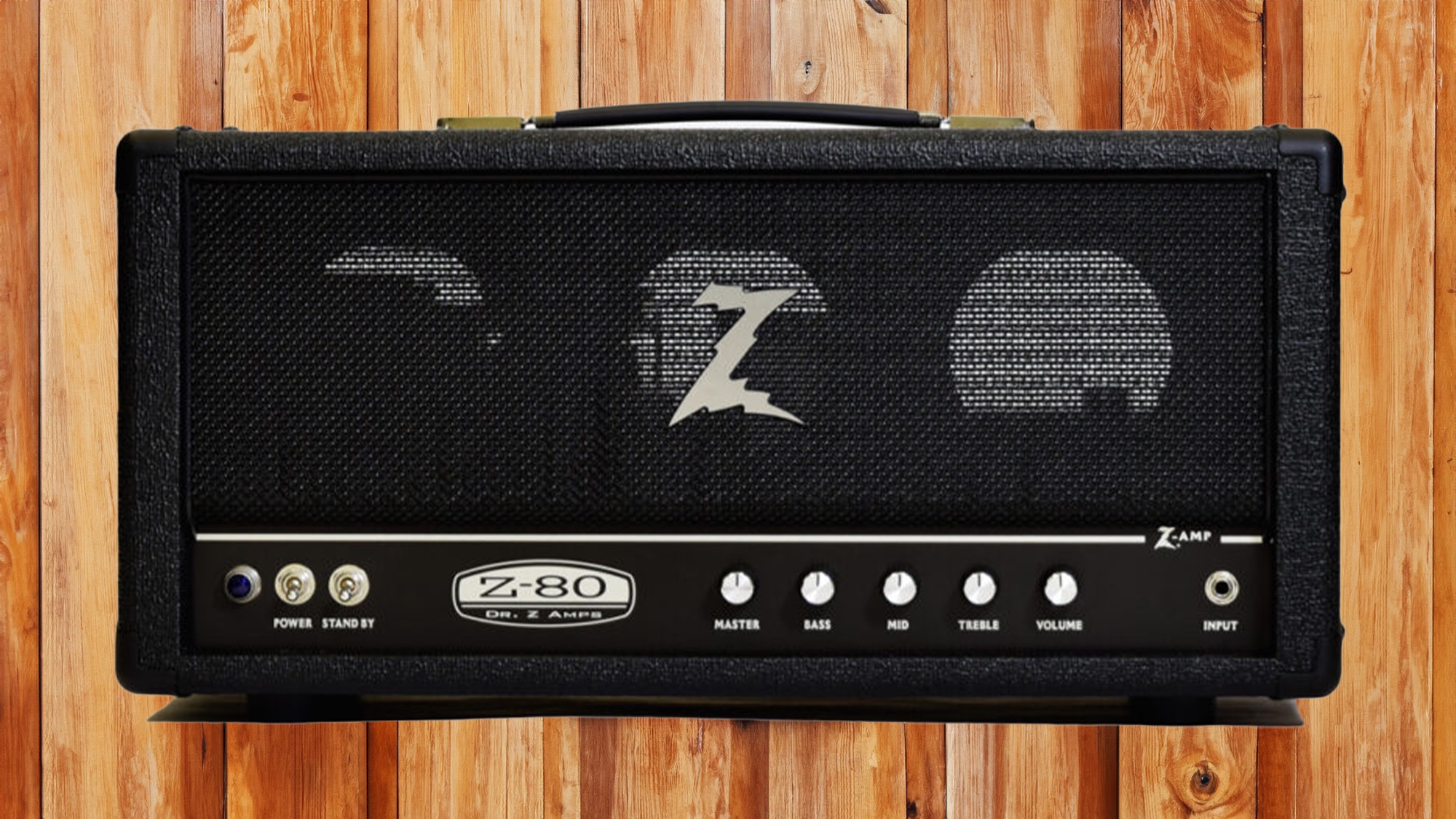GuitarPlayer Verdict
The Z-80 tracks the circuit of the best-sounding early Vox AC80s and adds a few simple features to suit the performance needs of 2024, without adversely impacting the tonal blueprint
Pros
- +
A well-conceived and beautifully built update of a rare classic, delivering stunning tone with updated performance
Cons
- -
It’s heavier, bigger, and louder than will suit some contemporary guitarists
You can trust Guitar Player.
When Dr. Z founder and chief designer Mike Zaite tells you, “I think this is the best amp I’ve ever built,” it’s worth paying attention. The maker has been a perennial name at the top of the boutique amp charts since he introduced his first Carmen Ghia to the market 36 years ago, and the intervening years have brought us tone monsters like the MAZ 38, Route 66, Stang Ray, Z Wreck, and others, so “best amp” comes in the wake of a lot of competition.
While Dr. Z has a strong reputation for originality, the new Z-80 has its roots in Brad Paisley’s own beloved and ultra-rare Vox AC80. Designed by Dick Denney in 1963, the AC80 (also called the AC80/100 or AC100 “80 to 100-watt amplifier”) was specifically created to help the Beatles rise above the noise of screaming teenage girls for the North American tours of the mid ’60s.
History tells us the Fab Four’s amps largely failed at that near-impossible task, although they sounded fantastic in the process (or at least later evidence indicates they would have, had anyone actually heard them at the time). Fewer than 300 units of this mammoth 80-watt masterpiece of cathode-biased sonic splendor were built before the more familiar fixed-bias, 100-watt AC100 was introduced around mid 1965.
Following the enthusiastic urging of Paisley, a frequent Dr. Z collaborator, and a full six years of development to bring it to the guitar world at large, the Z-80 tracks the circuit of the best-sounding of these early AC80s and adds a few simple features to suit the performance needs of 2024, without adversely impacting the tonal blueprint.

At its heart it’s an 80-watt, four-EL34 amp with two 12AX7s in the preamp and a 12AU7 phase inverter, with a single channel and a simple control set featuring volume, treble, middle, bass, and master. Couple all that with the fully hand-wired circuit boards (three of them), the high-end components, and, in particular, the massive custom transformers required to get the job done, and it all weighs in at 40 pounds for the head alone.
Part of the reason for the early AC80’s great sound, and for the design’s demise, was in the way it pushed several essential components to the brink of destruction. The cathode-biased output stage was very much Vox’s thing. This configuration was part and parcel of the so-called Class-A sound, and was responsible for a significant portion of that magical clean-yet-girthy, chimey-yet-saturated Vox tone.
This is the AC30’s stout big brother, packing chime with oomph, shimmer, bloom, and gutsy edge of breakup
Such a setup created a lot of heat in any EL84-loaded AC30, but translate that to a quartet of EL34s in the AC80 and forget about it! An alarmingly high number of cathode-biased 1963–’65 AC80s burned up in use, so a big part of Dr. Z’s challenge was to capture that same edge-of-destruction performance without the wreckage.
All the latest guitar news, interviews, lessons, reviews, deals and more, direct to your inbox!
The original early AC80s had individual cathode bias resistors and bypass capacitors on each of their four EL34 tubes, all replicated here. A look inside the chassis shows that there are far more of the hulking power resistors and hefty filter capacitors than signal-carrying components. “There are 12 essential components in there that perform better if they have a good while to warm up,” Zaite tells us.
“For that reason, you want to hit the power switch on the Z-80 and give it a few minutes to slowly warm up before you flip the standby and hit it all with the high voltages. After that, you can use the standby as you normally would.”
Zaite went through several iterations of custom-made power transformers before finding one that could help the Z-80 avoid the fate of many original AC80s. The output transformer, however, is made to the precise Vox schematic and custom-wound by Heyboer in the U.S.
“When I got it right and built the amp,” Zaite says, “I shipped it to Brad, and he played it right alongside his original AC80. He sent me a video, and I thought they sounded identical.” Since that time, the Z-80 has remained in Paisley’s main touring rig, although the amp has only just now been manufactured for sale to the public.
In addition to the added midrange and master controls, the Z-80 adds a buffered effects loop on the rear panel. Dr. Z uses the drop-in Metro Zero Loss FX loop circuit by Metropoulos for this, a highly acclaimed add-on selected by many high-end amp manufacturers. The amp also has outputs for 8Ω and 16Ω loads. The partner Z-80 cabinet ($1,577 on its own, less in the set) is an open-back 2x12 with two Celestion Alnico Gold speakers and an oval rear port.
I tested the Z-80 with a Gibson Les Paul and a Fender Telecaster, into a range of further cabinet options, including a closed-back 2x12 with Celestion G12H and G12M Creambacks, an open-back 1x12 with a Scumback J75, and a Two-Notes Captor X reactive load box and IR loader. Having known what to expect (or somewhat), I wasn’t entirely surprised by the Z-80’s general performance.
But it’s worth noting that this is not the Plexi-tinged crunch-and-wail machine that the four-EL34 tube complement might imply; rather it’s very much the stout big brother of the AC30. Chime with oomph, shimmer, bloom, and gutsy edge of breakup are the main tricks in its toolbox, and it does them with a gloriously musical and inspiring voice.

My 1966 Telecaster proved the perfect partner to the Z-80, which delivered thick clean-with-snarl, edge-of-breakup tones that excelled at everything from meaty wound-string alt-country riffs to bluesier leads higher up the fretboard. The amp loved the 1959 Les Paul reissue into these same settings, issuing a little more crunch in the chord work and slightly more singing lead tones, as might be expected.
When pushed harder, with the very effective master reining it in as required, the Z-80 delivers heavier Brit-rock crunch, and it’s a breathtaking experience when you let the master out a little and the output stage really starts to breathe. In addition, the amp interacted beautifully with a number of overdrive pedals, and the effects loop worked just as it should, furthering this tone machine’s versatility.
All in all, this is an impressive achievement from a brand that has delivered no shortage of great, creative guitar amps over the course of four decades, and it’s deserving of an Editors’ Pick Award.
Specifications – Dr. Z Z-80 Head
CONTACT Dr Z Amps
PRICE $3,599 street ($4,999 as matching set with 2x12 Celestion Gold cabinet)
CHANNELS 1
CONTROLS Volume, treble, middle, bass, master
POWER 80 watts
TUBES Two 12AX7 preamp tubes, 12AU7 phase inverter, four EL34 output tubes
EXTRAS Buffered FX loop with send and return, 8Ω and 16Ω speaker outs
WEIGHT 40 lbs
BUILT Assembled in USA
Dave Hunter is a writer and consulting editor for Guitar Player magazine. His prolific output as author includes Fender 75 Years, The Guitar Amp Handbook, The British Amp Invasion, Ultimate Star Guitars, Guitar Effects Pedals, The Guitar Pickup Handbook, The Fender Telecaster and several other titles. Hunter is a former editor of The Guitar Magazine (UK), and a contributor to Vintage Guitar, Premier Guitar, The Connoisseur and other publications. A contributing essayist to the United States Library of Congress National Recording Preservation Board’s Permanent Archive, he lives in Kittery, ME, with his wife and their two children and fronts the bands A Different Engine and The Stereo Field.



